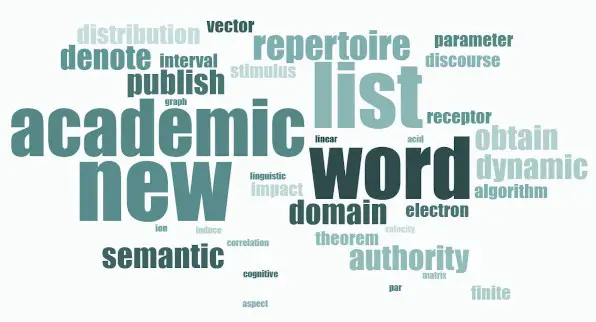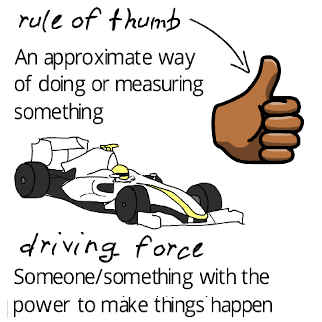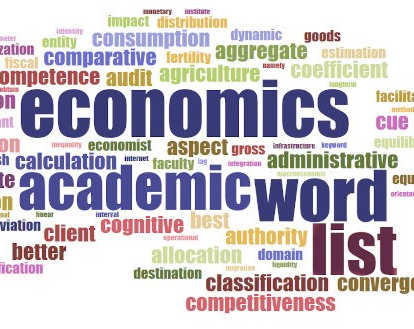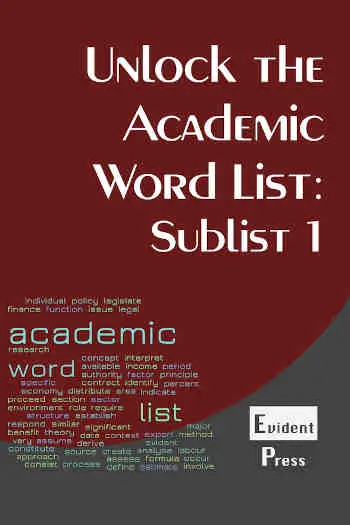Show AWL words on this page.
Show sorted lists of these words.


 







|
While lists such as the Academic Word List (AWL) and Academic Collocation List (ACL) are fairly well known, there are other lists of academic words which have been developed, some very recently, which are less well known but potentially very useful to students. The following pages give information on some of these lists.
General Academic Lists
These are lists of general academic vocabulary. Their developers intended them to be of general use, for students of any academic discipline.
One of the first widely used academic word lists, the University Word List (UWL) contains 836 word families divided into levels based on frequency. It excludes words from the GSL, and gives coverage of 8.5% of academic texts. Now largely replaced by the AWL.
The Academic Keyword List (AKL) consists of 930 words which appear more frequently in academic texts than non-academic ones. This tendency is called keyness, which leads to the name of the list, since it identifies keywords in academic (vs. non-academic) texts.
The New Academic Word List (NAWL) is a list of 963 words which frequently appear in academic texts, but which are not contained in the New General Service List (NGSL). The NAWL and NGSL in combination give 92% coverage.
Academic Vocabulary List (AVL)
The Academic Vocabulary List (AVL), developed in 2013 from the Corpus of Contemporary American English (COCA), is an updated list of "core" academic vocabulary, which excludes general high-frequency words as well as subject-specific (technical) words.
The Academic Formulas List (AFL) contains the most common formulaic sequences in academic English, i.e. recurring word sequences three to five words long. Divided into core (spoken and written language), spoken and written.
Discourse Connectors List (DCL)
The Discourse Connectors List (DCL) is a list of 632 discourse connectors analysed by frequency in academic, non-academic and spoken registers in the BNC (British National Corpus) and COCA.
This page describes how idioms are used in academic English, with a list of academic idioms for spoken and written English from a 2019 study by Julia Miller.
Field-Specific Academic Lists
The following lists are field-specific lists of academic vocabulary. They are sub-technical (not technical), and are intended by their developers to represent academic words which are important for students of specific academic disciplines. As such, they are field- i.e. subject-specific alternatives to the general academic lists given above.
The Science Word List (SWL) provides a list of 318 word families which do not occur in the GSL or AWL but which occur with reasonable frequency and range of written science texts.
Medical Academic Word List (MAWL)
The Medical Academic Word List (MAWL) is a list of 623 word families which frequently appear in medical research papers, but which are not contained in the General Service List (GSL). The MAWL makes up around 12% of words in those texts.
Chemistry Academic Word List (CAWL)
The Chemistry Academic Word List (CAWL) is a list of 1400 word families which occur frequently in Chemistry research articles. It is intended for EFL graduate Chemistry students.
Medical Academic Vocab List (MAVL)
The Medical Academic Vocabulary List (MAVL) is a list of 819 words which frequently appear in medical research papers and textbooks. The MAVL makes up around 19% of words in medical research papers, and 20% of words in medical English text books.
Economics Academic Word List (EAWL)
The Economics Academic Word List (EAWL) is a list of 887 words which frequently appear in economics texts, but which are not contained in the New General Service List (NGSL). The EAWL makes up around 5.5% of words in university economics texts in English.
Nursing Collocation List (NCL)
The Nursing Collocation List (NCL) is a list of 488 collocations which occur frequently in nursing journal articles. It is the nursing equivalent of the Academic Collocation List.











